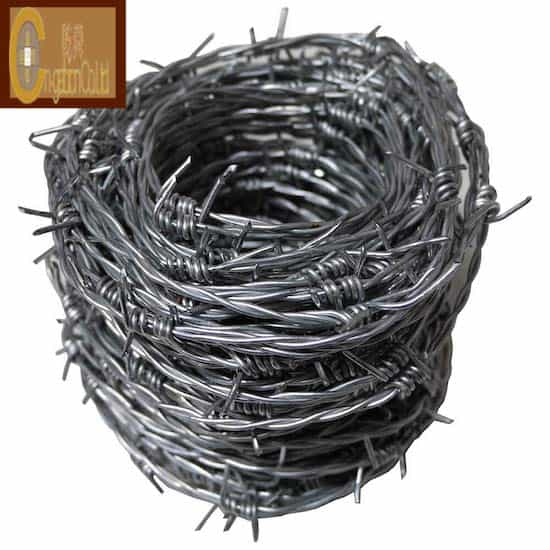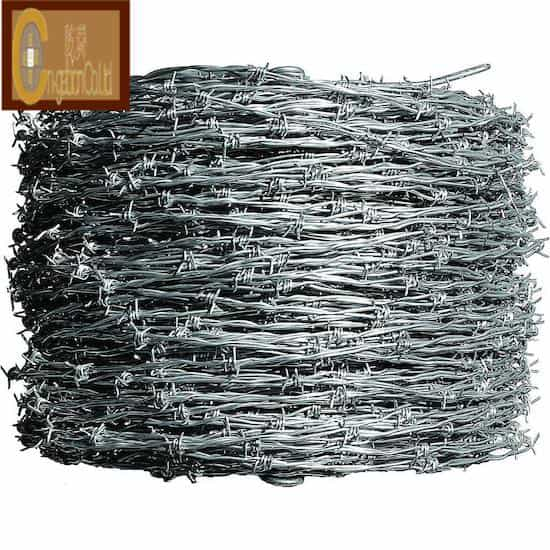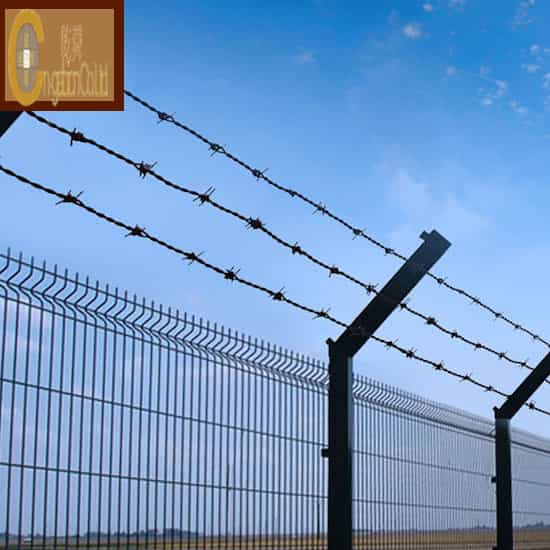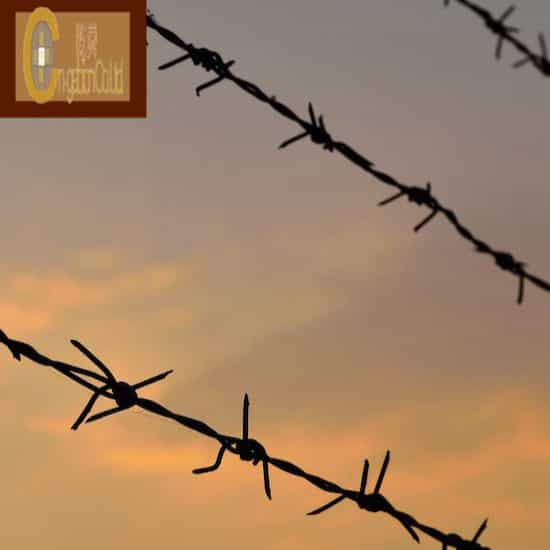Barbed Wire
Barbed wire, also known as barb wire, occasionally corrupted as bobbed wire or bob wire, is a type of steel fencing wire constructed with sharp edges or points arranged at intervals along the strands. It is used to construct inexpensive fences and is used atop walls surrounding secured property. It is also a major feature of the fortifications in trench warfare (as a wire obstacle).
A person or animal trying to pass through or over barbed wire will suffer discomfort and possibly injury. Barbed wire fencing requires only fence posts, wire, and fixing devices such as staples. It is simple to construct and quick to erect, even by an unskilled person.
- Barbed tape or razor wire is a mesh of metal strips with sharp edges whose purpose is to prevent passage by humans. The term "razor wire", through long usage, has generally been used to describe barbed tape products. Razor wire is much sharper than the standard barbed wire; it is named after its appearance but is not razor sharp. The points are very sharp and made to rip and snag clothing and flesh.
The multiple blades of a razor-wire fence are designed to inflict serious cuts on anyone attempting to climb through and therefore have a strong psychological deterrent effect. Razor wire is used in many high-security applications because, although it can be circumvented relatively quickly by humans with tools, penetrating a razor-wire barrier without tools is very slow and difficult, giving security forces more time to respond.
Materials
- Zinc coated steel wire. Galvanized steel wire is the most widely steel wire during barbed wire production. It has commercial type, Class 1 type and Class 3 type. Or it is also well known as electric galvanized steel wire and hot dipped galvanized steel wire.
- Zinc-aluminum alloy coated steel wire. Barbed wire is available with zinc, 5% or 10% aluminum alloy and mischmetal steel wire, which is also known as Galfan wire.[9]
- Polymer-coated steel wire. Zinc steel wire or zinc-aluminum steel wire with PVC, PE or other organic polymer coating.
- Stainless steel wire. It is available with SAE 304, 316 and other materials.
- Strand structure
- Single strand. Simple and light duty structure with single line wire (also known as strand wire) and barbs.
- Double strand. Conventional structure with double strand wire (line wire) and barbs.
- Barb structure
- Single barb. Also known as 2-point barbed wire. It uses single barb wire twisted on the line wire (strand wire).
- Double barb. Also known as 4-point barbed wire. Two barb wires twisted on the line wire (strand wire).
- Twist type
- Conventional twist. The strand wire (line wire) are twisted in single direction, which is also known as traditional twist. Besides, the barb wires are twisted between the two strand wire (line wire).
- Reverse twist. The strand wire (line wire) are twisted in opposite direction. Besides, the barb wires are twisted outside of the two line wire.
Nominal diameter[edit]
| Gauge | Imperial | Metric |
|---|---|---|
| 121⁄2 gauge | 0.099 in. | 2.51 mm |
| 13 gauge | 0.092 in. | 2.34 mm |
| 133⁄4 gauge | 0.083 in. | 2.11 mm |
| 14 gauge | 0.080 in. | 2.03 mm |
| 161⁄2 gauge | 0.058 in. | 1.47 mm |





 carl_gao@live.cn
carl_gao@live.cn